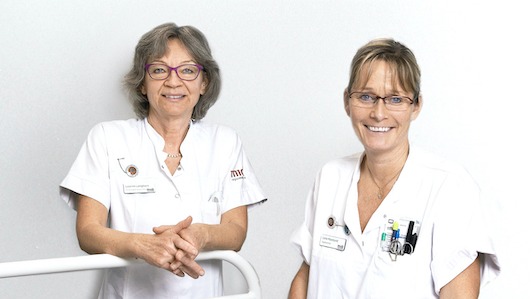A recent pilot study has examined the impact of circadian lighting on nurses who work in rotating shifts at Aarhus University Hospital and Rigshospitalet Glostrup - the results show improved sleep and enhanced circadian rhythm.
In most hospitals, the levels of light and noise remain constant throughout the day and night, even when the body needs darkness and rest during the night.
— The consistent lighting throughout the day and night can have detrimental effects on the staff working in rotating shifts. They face challenges in maintaining a normal sleep schedule, alertness, cognitive abilities, and mood, which ultimately weakens their focus and attention, according to Leanne Langhorn, a clinical nursing specialist and PhD at Aarhus University Hospital.
Research has indicated that improper lighting during the night can increase stress levels, decrease well-being, and reduce job satisfaction. In order to investigate this further, Aarhus University Hospital and Rigshospitalet Glostrup initiated a collaboration with the lighting company Chromaviso in 2013 to develop a circadian lighting system tailored to the complex hospital environment. This included addressing the challenge of balancing the need for darkness to align with the body's natural circadian rhythm, while also providing adequate lighting for work tasks.

Staff outcomes
The impact of circadian lighting on the staff has been examined in a pilot study involving 26 nurses working in intensive and rehabilitation departments with circadian lighting, as well as a control department with regular lighting. One criteria for inclusion in the study was that the nurses had at least one night shift per week. The staff kept a diary and completed questionnaires regarding their sleep patterns, work, and well-being. The focus of the study's questionnaire was specifically on staff members with rotating shifts.
—Nurses who have been exposed to circadian lighting generally experience improved sleep, as they fall asleep more easily and sleep more peacefully. They also find it easier to wake up in the morning and feel more rested after three days in the circadian lighting compared to the control group, explains Leanne Langhorn before she continues:
— The study provided varied responses, making the results not entirely conclusive. However, the trend suggests that nurses exposed to circadian lighting generally experience improved sleep, as they fall asleep more easily and sleep more peacefully. They also find it easier to wake up in the morning and feel more rested after three days in the circadian lighting compared to the control group.
Due to the limited scope of the study, statistical significance was not achieved in the results; however, they do align with other research that demonstrates the connection between light, sleep, energy, and mood.
— Other recent studies indicate that it usually takes at least four days to adjust the circadian rhythm after night shifts. However, our project suggests that circadian lighting may potentially reduce this time, says Leanne Langhorn who expresses interest in further investigating this topic. The study also highlights various other benefits of circadian lighting, such as its behaviour-regulating effect due to the subdued light at night.
— The circadian lighting generally has a positive impact on the work environment and behaviour among the staff. In the department with circadian lighting, they are conscious of maintaining a natural and regular sleep-wake cycle with light and activity during the day and darkness, calmness, and rest at night. The intensive department has shown the most significant positive response to circadian lighting, which can be explained by the previous constant light and activity. In the rehabilitation department, the lights are normally turned off at night, says Leanne Langhorn.
The natural light during the night is devoid of blue tones, which means it does not disrupt the body's circadian rhythm while still providing sufficient lighting for the staff to carry out their work.
— Most staff members are highly positive about the nightlight. However, there have been a few who feel tired in the evening because they lack stimulation from the white light. As a result, they have turned on one of the white light settings in another room as needed, explains Lone Mathiesen, a development nurse at Rigshospitalet Glostrup.
The proper lighting is essential for ensuring safety during observation, medication, and documentation. Leanne Langhorn explains that the feedback from our project aligns with other research, which demonstrates that light can reduce errors.
Comprehensive and tailored
The circadian lighting is based on a clinically proven light protocol that follows the natural rhythm of the day. Additionally, each bed has customizable lighting settings that the staff can utilize when needed. For example, they can choose a calming light or a minimally disruptive, focused white light for specific nighttime tasks. The solution at Aarhus University Hospital is tailored to the needs of the neurointensive environment, while at Rigshospitalet Glostrup, it is designed for neurological rehabilitation. This comprehensive approach ensures a balance between the body's circadian rhythm and the staff's need for adequate lighting for their work. Further studies with a larger number of nurses and over a longer period of time are needed to strengthen the findings and explore additional perspectives, according to Leanne Langhorn.
— circadian lighting ensures a balance between the body's circadian rhythm and the staff's need for adequate lighting for their work. It is a holistic solution that contributes to the staff's work environment, well-being, and health. Further studies with a larger number of nurses and over a longer period of time should be conducted to strengthen the findings and explore additional perspectives, concludes Leanne Langhorn..


